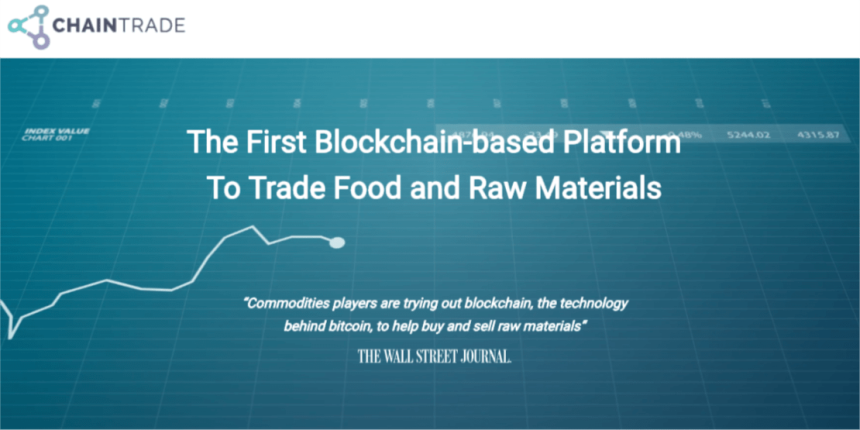Reason to trust

How Our News is Made
Strict editorial policy that focuses on accuracy, relevance, and impartiality
Ad discliamer
Morbi pretium leo et nisl aliquam mollis. Quisque arcu lorem, ultricies quis pellentesque nec, ullamcorper eu odio.
Food and raw materials are among the most important commodities that are necessary for the continued existence of humankind. These commodities also represent a huge aspect of the entire commodities market which trades an average volume of about 2 Trillion USD per annum.
The limits of a centralized market
In the traditional markets, commodities are traded within exchanges as either options or futures.
An “Option” is a financial contract that gives the buyer the right, but not the obligation, to buy or sell a security or some other financial asset at an agreed-upon price (strike price) during a specified period or on a specific date (exercise date). But futures represent contracts that are standardized, meaning that standard specifications are used for the underlying commodity’s quality, quantity, and delivery so that the prices mean the same thing to all participants in the market.
According to J.F. Pyle,
“Commodity exchanges are specialized organized markets which provide a place where their members buy and sell commodities or contract for future delivery under established rules and regulations.”
Present day exchanges are known for their heavily centralized nature. In order to gain access to these exchanges and participate in commodities trading, you will have to pay significantly high fees. Most often, trading in such environments is exclusive to institutional investors with huge capital.
Disrupting the commodities market
As blockchain disruption continues, ChainTrade is introducing a novel system that decentralizes the commodities market, making it accessible to traders at all levels.
The exclusive nature of present-day exchanges is a result of consolidation and centralization over the years. This development has caused the current landscape to comprise only of a few dominant organizations which charge high fees and dictate requirements that present high barriers to entry for small investors.
Additionally, unlike equity exchanges where there is active competition and liquidity is spread out, the structure and operations of these exchanges restrict the liquidity of futures, which creates significant challenges for traders who want to operate across markets in different continents.
Creating a universally accessible market
Also, high fees and complex processes are factors that have contributed to the difficulties encountered by traders in the commodities market.
The lack of standardization and complicated processes affects productivity and makes the systems inefficient. This is a situation being capitalized upon by ChainTrade as it implements blockchain technology to disrupt the market.
“We want to move this trade to the blockchain, building a decentralized platform accessible to anyone without intermediaries. It is time to bring competition to this business, decentralize the exchanges, open them to anyone who wants to be part of it, and dramatically lower access costs. The blockchain technology will allow us to do just that: revolutionize the world of commodity derivatives”, says Jacques.
ChainTrade is based on the CTC (standing for ChainTrade Coin), an ERC20 compliant token. The token is used for all trading activities on the platform. The activities include but are not limited to trading, settlement of contracts, insurance, and leverage.
For now, the ChainTrade platform allows the trading of options and futures on commodities only (food and raw materials). However, in a second phase, the company plans to extend the platform to the trading of futures and options on equities, treasury bonds, and other types of underlying assets.
Token holders can operate as traders or insurers. Insurers guarantee each trade by providing insurance against the risk of default by the traders (counterparty risk).
A plan for development
To this end, the company is embarking on a token sale in order to enhance the development of its platform. The Initial Token Sale is scheduled to run from 9th October 2017 to 31st December 2017.
This token sale is expected to provide the required funds to launch and operate ChainTrade while giving investors a token that will be used to access and use the platform. It will serve the objective of releasing the CTC token into circulation and set an initial market price.
As blockchain disruption continues to sweep across the major technological ecosystems, fundamental aspects of human existence such as food supply, infrastructural development, and mineral distribution which are directly or indirectly dependent on the commodities market will be eventually included as well.



























